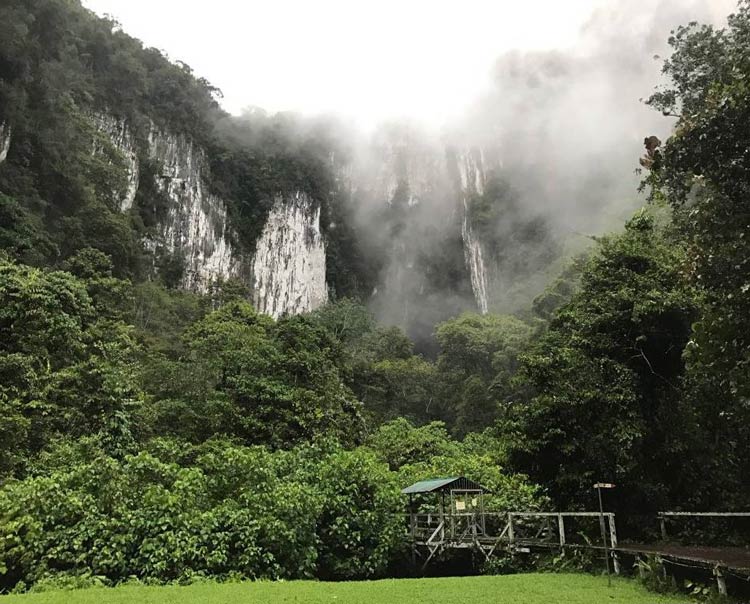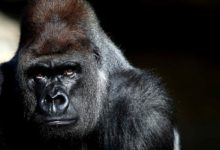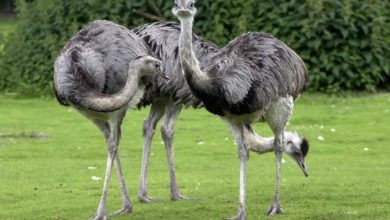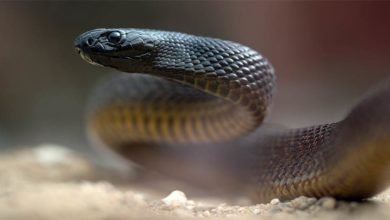Discovering the Hidden Wonders of Gunung Mulu National Park
Deep in the heart of the Malaysian state of Sarawak, surrounded by lush rainforest and soaring mountains, lies a natural wonder unlike any other. It is a place of soaring pinnacles, vast cave systems, and a dazzling array of plant and animal life. This is Gunung Mulu National Park, a UNESCO World Heritage site and one of the most spectacular natural attractions in Southeast Asia.
In this enchanting corner of the world, visitors are transported to a land of myth and legend, where rivers flow through subterranean caverns and towering limestone formations rise from the forest floor. It is a place where rare orchids and pitcher plants thrive, where monkeys and hornbills play in the treetops, and where one of the world’s largest cave chambers can be found.
At the heart of the park lies the Sarawak Chamber, a vast underground chamber measuring over 600 meters long, 435 meters wide, and up to 115 meters high. This extraordinary space, carved out over millions of years by the flow of underground rivers, is big enough to hold several jumbo jets and is one of the most breathtaking natural wonders in the world.
But the Sarawak Chamber is just the beginning. Gunung Mulu National Park is also home to an astonishing network of caves, tunnels, and underground rivers, including the Deer Cave, which is one of the world’s largest cave passages, and the Clearwater Cave, which boasts some of the most beautiful formations found in any cave system.
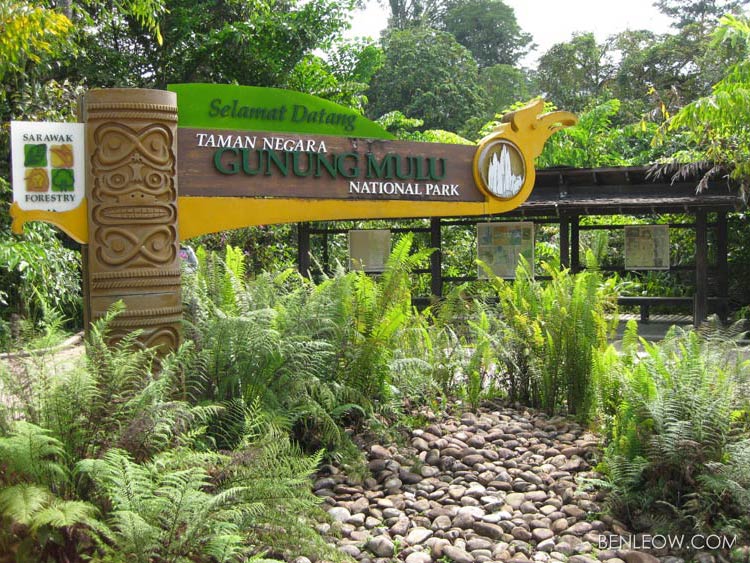
Above ground, visitors can explore the park’s dense rainforest, which is home to a remarkable variety of plant and animal life. Here, giant tree ferns tower overhead, while orchids, ferns, and bromeliads grow in profusion on the forest floor. Monkeys swing through the branches, hornbills call out from the treetops, and deer and wild boar can be spotted grazing in the clearings.
But Gunung Mulu National Park is more than just a natural wonderland. It is also a testament to the power of conservation and sustainable tourism. The park’s management team works tirelessly to protect the park’s delicate ecosystem, while also providing opportunities for visitors to experience the park’s wonders in a responsible and sustainable way.
For anyone seeking an adventure in the heart of the rainforest, Gunung Mulu National Park is a destination not to be missed. It is a place of rare beauty and wonder, where nature reigns supreme and visitors can experience the true magic of the natural world.
Gunung Mulu National Park, located in the heart of Borneo, is a breathtaking natural wonder that will take your breath away. From its towering peaks to its intricate cave systems, this UNESCO World Heritage Site is a must-visit destination for anyone looking to experience the beauty and mystery of the rainforest.
With over 200 kilometers of marked trails, visitors can hike through the park’s lush jungle, marvel at the towering pinnacles, or explore the dark and mysterious caves. With its unique blend of geological and biological wonders, Gunung Mulu National Park is truly a one-of-a-kind destination that will leave a lasting impression on all who visit.

Location
Gunung Mulu National Park is located in the northeast region of Sarawak, Malaysia, on the island of Borneo. (Coordinates: 4.0478° N, 114.7947° E)
Basic Facts About The Gunung Mulu National Park
Gunung Mulu National Park is a protected area in Sarawak, Malaysia that covers an area of approximately 52,864 hectares (529.5 km² or 205.0 mi²). It was established in 1974 and was declared a UNESCO World Heritage Site in 2000 due to its unique geological formations, including towering karst peaks, and its diverse range of flora and fauna.
The park is also home to some of the world’s largest cave systems, including the Clearwater Cave and the Deer Cave, which are both open to visitors. In addition to its geological wonders, Gunung Mulu National Park also features several different ecosystems, including lowland dipterocarp forests, heath forests, and montane forests, which support a wide range of plant and animal species.
History and name of the Park
The Gunung Mulu National Park takes its name from the highest peak within its boundaries, Gunung Mulu, which stands at 2,376 meters (7,796 ft) tall. The park was originally established in 1974 as the Gunung Mulu Game Reserve and was later renamed as a national park in 1980.
The area has been known to local people for centuries, but its natural wonders were not widely known to the outside world until the 1970s, when a team of British and Malaysian speleologists (cave experts) explored and mapped many of the park’s cave systems. Since then, Gunung Mulu National Park has become a popular destination for adventurers, eco-tourists, and scientists, who come to study its unique geological formations, diverse ecosystems, and rich array of plant and animal life.
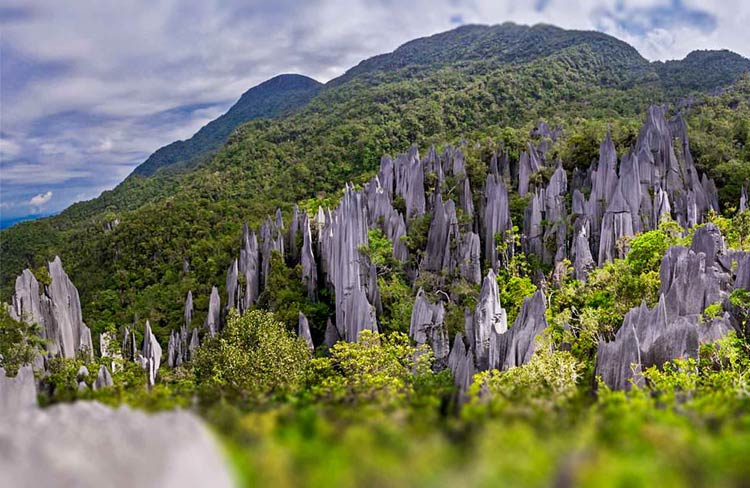
Geography of the park
Gunung Mulu National Park is located in the hilly terrain of northern Borneo and encompasses a wide range of landscapes and ecosystems. The park is dominated by towering karst peaks, including Gunung Mulu itself, which rise abruptly from the surrounding lowlands. The park’s landscape also includes lush jungle, rocky outcrops, and swift-flowing rivers, which support a diverse array of plant and animal life.
The park’s caves, including the Clearwater Cave and the Deer Cave, are some of the largest and most complex cave systems in the world, and are formed by the erosive action of water over thousands of years. These caves have unique and varied features, such as towering caverns, intricate rock formations, and large underground rivers. The park’s ecosystems, which range from lowland dipterocarp forests to montane forests, support a wide variety of plant and animal species, many of which are endemic to Borneo.

Features of the park
Gunung Mulu National Park is known for its unique geological features and diverse range of flora and fauna. Some of the key features of the park include:
- Karst peaks
The park is dominated by towering karst peaks, including Gunung Mulu itself, which rise abruptly from the surrounding lowlands. These peaks are the result of the erosive action of water on the limestone rock over thousands of years. - Caves
The park is home to some of the world’s largest and most complex cave systems, including the Clearwater Cave and the Deer Cave. These caves are famous for their towering caverns, intricate rock formations, and large underground rivers. - Biodiversity
The park supports a diverse range of plant and animal species, many of which are found nowhere else on Earth. This includes a large number of species of birds, mammals, reptiles, amphibians, and insects, as well as a diverse range of plant species, including towering trees, colorful flowers, and unique epiphytes. - Ecosystems
Gunung Mulu National Park features several different ecosystems, including lowland dipterocarp forests, heath forests, and montane forests, each of which supports a unique array of plant and animal life. - Waterfalls
The park is home to several scenic waterfalls, including the Melinau Falls, which plunge into the jungle below from the park’s high cliffs. - Rivers
The park is crisscrossed by several fast-flowing rivers, which provide important habitat for fish, mammals, and birds, as well as providing important corridors for the dispersal of plant seeds. - Wildlife
Gunung Mulu National Park is home to a wide variety of wildlife, including primates, such as the Bornean orangutan and the proboscis monkey, as well as deer, civets, and several species of bats, including the giant fruit bat. - Hiking trails
The park has over 200 kilometers (124 miles) of marked hiking trails, ranging from easy jungle walks to strenuous multi-day treks, that allow visitors to explore the park’s diverse landscapes and unique geological features. - Canopy walkway
One of the highlights of the park is the Mulu Canopy Walkway, a suspended walkway that offers stunning views of the jungle canopy and the park’s towering peaks. - Cultural heritage
The park is also significant for its cultural heritage, as the local indigenous communities have a long history of living in the area and have developed a rich cultural heritage that is closely tied to the park’s natural environment.
These are just some of the many features that make Gunung Mulu National Park a truly unique and special place, and a must-visit destination for anyone interested in the natural world.
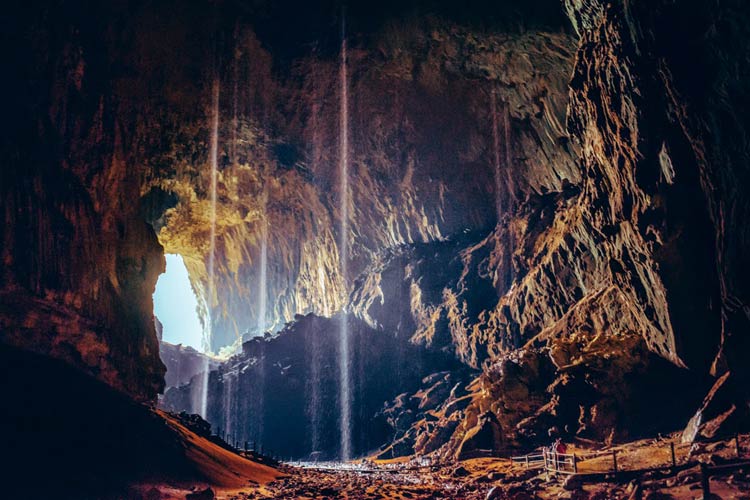
Sarawak Chamber
The Sarawak Chamber is a large underground cavern located within the Gunung Mulu National Park in Sarawak, Malaysia. It is considered one of the largest cave chambers in the world, with an estimated volume of around 2,300 million cubic meters (80 million cubic feet). The chamber is located deep within the park’s complex network of caves and can only be accessed by a challenging hike through the park’s jungle and caves.
The Sarawak Chamber is famous for its sheer size, with walls rising to heights of up to 80 meters (262 ft) and a floor that covers an area of around 10,000 square meters (107,640 sq ft). The chamber is filled with towering stalactites and stalagmites, and is home to a rich array of plant and animal life, including bats, swiftlets, and various species of insects.
Visitors to the Sarawak Chamber are awed by its grandeur and are struck by the sense of humbling scale that is created by the sheer size of the chamber and its surroundings. The chamber is a testament to the power of nature and the incredible geological forces that have shaped the earth over millions of years. It is a must-visit destination for anyone interested in caving, geology, or the natural world.

Geology of the park and surrounding areas
Gunung Mulu National Park and its surrounding areas are located on the island of Borneo and are part of the larger Mulu-Kanang Anak sedimentary formations. These formations are characterized by thick sequences of limestone and sandstone, deposited during the Late Cretaceous to Eocene periods, around 65-45 million years ago.
The dominant feature of the park’s geology is its karst topography, which is characterized by towering peaks, deep valleys, and extensive cave systems. The karst landscape was formed by the erosive action of water on the soluble limestone rock, which created the complex cave systems and towering peaks that are so characteristic of the park today.
In addition to the karst topography, the park’s geology is also characterized by several unique geomorphological features, including sinkholes, cliffs, and scalloped valleys. These features are the result of the ongoing dissolution of the underlying limestone rock, which has created a landscape that is constantly changing and evolving over time.
The surrounding lowlands are dominated by alluvial plains, which are characterized by gently rolling hills, swamp forests, and oxbow lakes. These areas are important for their rich biodiversity and are home to a wide range of plant and animal species, including many that are found nowhere else on Earth.
Overall, the geology of Gunung Mulu National Park and its surrounding areas is incredibly diverse and complex, and is a testament to the incredible geological forces that have shaped the earth over millions of years.
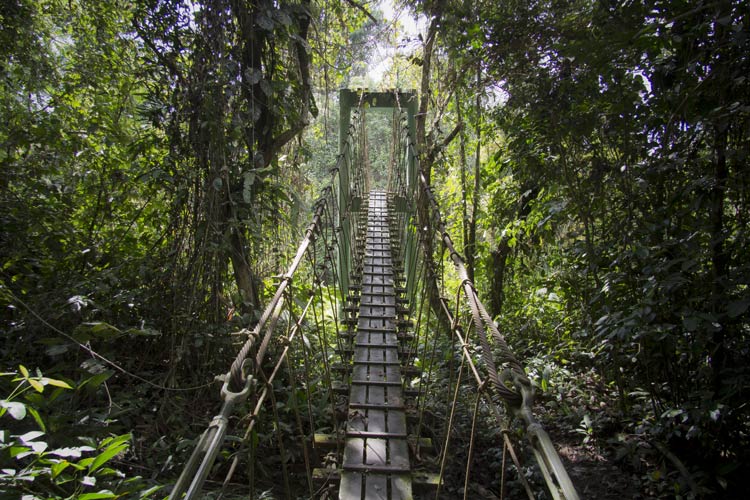
Climate of the park
Gunung Mulu National Park has a tropical rainforest climate, which is characterized by high levels of rainfall and high humidity throughout the year. The average temperature in the park ranges from 20-25°C (68-77°F), with little variation throughout the year.
The park experiences two distinct rainy seasons, one from November to February and another from June to September, with the wettest months typically being November and December. During these months, daily rainfall is common, and visitors can expect to experience heavy downpours and thunderstorms. Despite the heavy rainfall, the park is still accessible year-round, and many visitors find the lush and verdant environment to be especially enchanting during the rainy season.
The rest of the year, visitors can expect sunny days with occasional showers, and the park is at its driest from March to May. This is a good time to visit if you prefer dry weather, but it’s also the peak tourist season, so be prepared for more crowded trails and accommodations.
In conclusion, Gunung Mulu National Park has a tropical rainforest climate with high rainfall, high humidity, and stable temperatures throughout the year, making it an ideal destination for nature lovers and outdoor enthusiasts looking for an immersive rainforest experience.

Flora in the Gunung Mulu National Park
Gunung Mulu National Park is home to a rich and diverse array of flora, including a wide range of plant species that are found nowhere else on Earth. The park’s lush tropical rainforest environment is characterized by towering trees, lush undergrowth, and a profusion of vines, ferns, and other epiphytes.
Some of the notable tree species found in the park include Dipterocarpus (Shorea) species, Shorea species (Ironwood), and Hopea species (Screw-pine). These trees are known for their hard and durable wood, which is highly valued for construction and furniture-making.
The park’s understory is characterized by a dense layer of shrubs, ferns, and other low-growing plants, including the species Neobalanocarpus heimii (Ramin), Calamus manan (Rattan), and Gleichenia linearis (Fern).
In addition to these trees and shrubs, the park is also home to a rich array of epiphytes, including orchids, ferns, and bromeliads. Some of the most notable orchid species found in the park include Dendrobium, Paphiopedilum, and Phalaenopsis, which are prized for their delicate beauty and vibrant colors.
The Gunung Mulu National Park is a botanical wonderland, and visitors can expect to encounter a rich and diverse array of flora, including many species that are found nowhere else on Earth. Whether you’re an avid botanist, a nature enthusiast, or simply someone who appreciates the beauty of the natural world, the park is a must-visit destination.
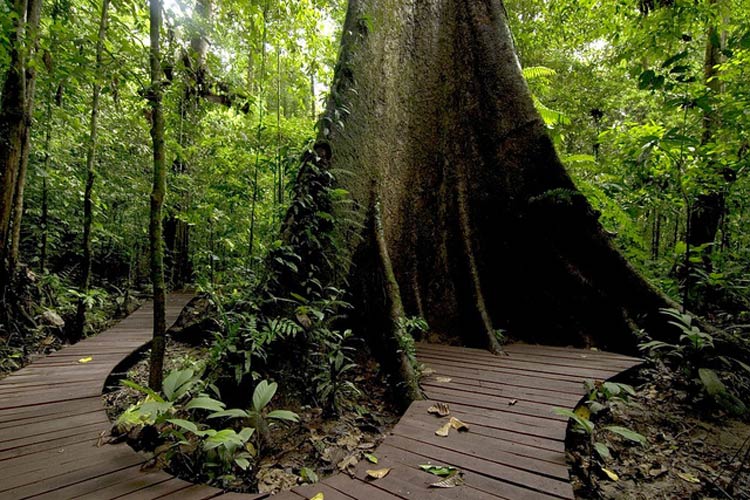
Fauna in the Gunung Mulu National Park
Gunung Mulu National Park is home to a rich and diverse array of fauna, including many species that are found nowhere else on Earth. The park’s lush tropical rainforest environment provides a rich habitat for a wide range of mammals, birds, reptiles, amphibians, and insects, and visitors can expect to encounter a variety of wildlife during their visit.
Some of the notable mammal species found in the park include the Bornean Orangutan (Pongo pygmaeus), the Bornean Gibbon (Hylobates muelleri), and the Sunda Clouded Leopard (Neofelis diardi). These species are threatened with extinction and are protected within the park, making it one of the best places in the world to see them in the wild.
The park is also home to a wide range of bird species, including the Rhinoceros Hornbill (Buceros rhinoceros), the Oriental Dwarf Kingfisher (Ceyx erithaca), and the Black-and-yellow Broadbill (Eurylaimus ochromalus). These birds are known for their distinctive and colorful plumage, and are a popular draw for birdwatchers from around the world.
In addition to mammals and birds, the park is also home to a rich array of reptiles and amphibians, including the reticulated python (Python reticulatus), the Malayan pit viper (Calloselasma rhodostoma), and the Bornean Leaf Frog (Hylarana erythraea).
Finally, the park is also home to a wide array of insects, including moths, butterflies, and beetles, as well as a rich array of spiders and other arachnids. These insects play an important role in the park’s ecosystem, serving as pollinators, decomposers, and prey for other species.
The Gunung Mulu National Park is a wildlife wonderland, and visitors can expect to encounter a rich and diverse array of fauna, including many species that are found nowhere else on Earth. Whether you’re an avid wildlife enthusiast, a nature lover, or simply someone who appreciates the beauty of the natural world, the park is a must-visit destination.
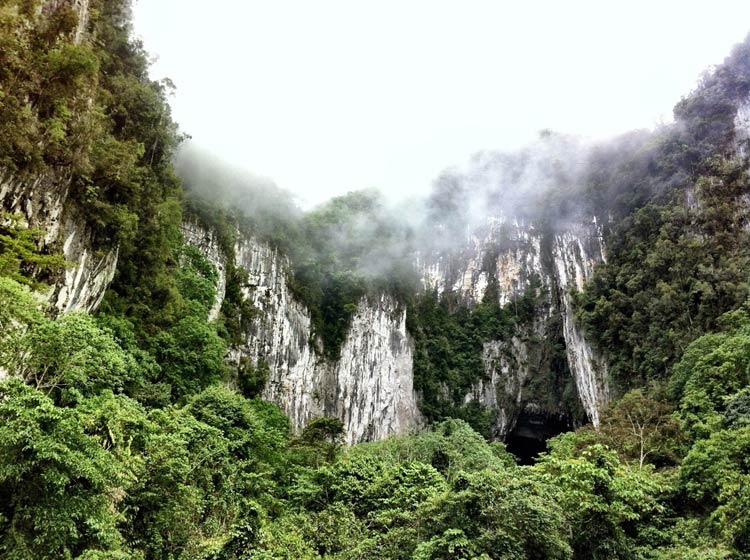
Tourism and tourist main attractions in the park
Gunung Mulu National Park is a popular tourist destination, attracting visitors from around the world with its unique and diverse natural features. Some of the main tourist attractions in the park include:
- The Sarawak Chamber
This massive cave chamber is the largest known cave chamber in the world, measuring over 600 meters (1,969 feet) long, 435 meters (1,427 feet) wide, and a maximum height of 115 meters (377 feet). Visitors can explore the chamber on guided tours, which offer stunning views of the towering cave walls and ceilings. - The Pinnacles
These towering limestone spires are a distinctive and impressive feature of the park, rising up to a height of over 45 meters (148 feet) in some places. The Pinnacles are a popular destination for visitors, who can explore the area on guided hikes or view the spires from a distance on scenic flights. - The Headhunters’ Trail
This scenic hiking trail is a popular destination for visitors, offering breathtaking views of the park’s lush tropical rainforest and the nearby mountains. The trail passes through a variety of landscapes, from towering trees and lush undergrowth to fast-flowing streams and scenic waterfalls. - The Cave Systems
Gunung Mulu National Park is home to a vast and intricate network of caves, many of which are open to visitors. Some of the most popular cave systems include the Clearwater Cave, the Wind Cave, and the Cave of the Winds, which are known for their unique and striking features, such as crystal-clear streams, towering cave walls, and intricate rock formations.
Gunung Mulu National Park is a must-visit destination for anyone interested in the natural world, offering a wealth of unique and diverse attractions, from breathtaking caves and towering pinnacles to scenic hiking trails and abundant wildlife. Whether you’re an avid adventurer, a nature lover, or simply someone who appreciates the beauty of the great outdoors, the park is sure to leave a lasting impression.
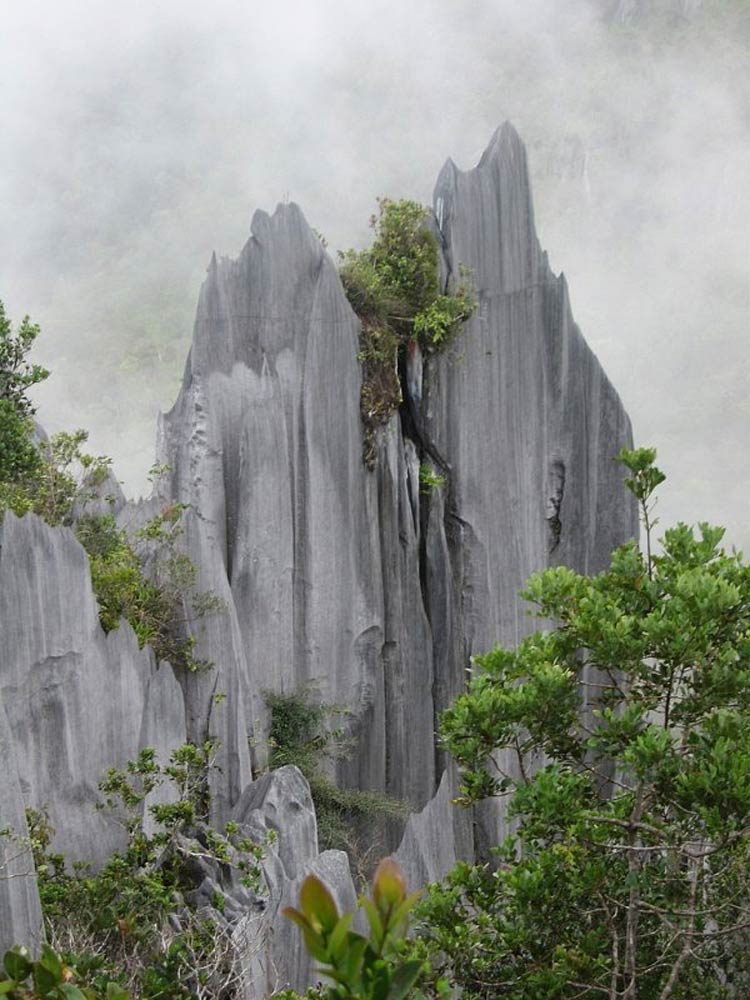
How To Reach To The Gunung Mulu National Park?
Gunung Mulu National Park can be reached by several modes of transportation:
- By Air
The closest airport to Gunung Mulu National Park is Mulu Airport, which is located approximately 4 km (2.5 miles) from the park. Direct flights to Mulu Airport are available from Kuching, the capital city of Sarawak. - By Boat
The park can also be reached by boat from the town of Marudi, which is located approximately 60 km (37 miles) from the park. This journey takes around 2-3 hours and provides a scenic way to reach the park. - By Road
The park can be reached by road from the town of Marudi, although this journey is only recommended for those with 4WD vehicles as the road is often in poor condition.
It is important to note that access to Gunung Mulu National Park is strictly controlled, and visitors are required to purchase a park entry permit in advance. This can be done through a registered tour operator or directly through the park’s official website.

Best Time To Visit The Gunung Mulu National Park
The best time to visit Gunung Mulu National Park depends on your interests and what you hope to see and experience while visiting the park.
- Dry Season (April to September)
The dry season is the best time to visit Gunung Mulu National Park if you are interested in trekking and exploring the park’s caves. This is the best time for cave visits as the water levels are low and the paths are less slippery. The weather is typically warm and sunny, with temperatures averaging between 25-30°C (77-86°F). - Rainy Season (October to March)
The rainy season is the best time to visit Gunung Mulu National Park if you are interested in experiencing the park’s lush tropical rainforest. This is the time when the rainforest is most vibrant and lush, and the waterfalls and streams are in full flow. However, this time of year is also the wettest, and heavy rainfall can make trekking and cave visits more challenging.
Regardless of when you visit Gunung Mulu National Park, it is important to come prepared with the appropriate clothing and gear, including sturdy footwear, rain gear, and insect repellent. Visitors should also be aware of the park’s regulations and follow the guidance of park rangers to ensure that they have a safe and enjoyable experience.
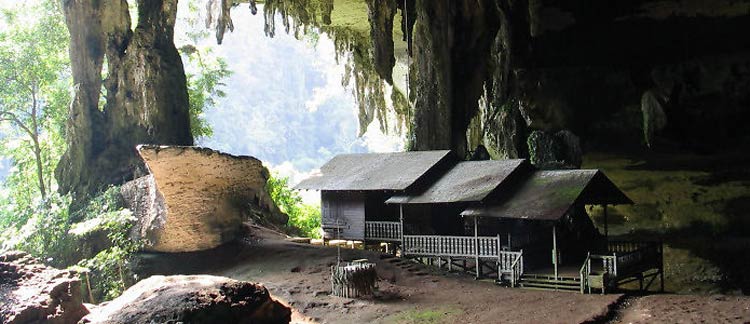
Conservation
Gunung Mulu National Park is actively managed for conservation, with a focus on preserving the park’s unique and fragile ecosystem. Some of the conservation efforts in place at Gunung Mulu National Park include:
- Habitat protection
Gunung Mulu National Park encompasses over 52,000 hectares (127,000 acres) of protected rainforest, which is home to a wide range of plant and animal species. The park is actively managed to minimize the impact of human activity on the forest and its inhabitants. - Species protection
Gunung Mulu National Park is home to several threatened and endangered species, including the Bornean orangutan, slow loris, and several species of bats. The park’s management team works to protect these species through habitat restoration and the implementation of protective measures, such as the creation of wildlife corridors. - Cave conservation
Gunung Mulu National Park is home to some of the largest and most complex cave systems in the world, including the Sarawak Chamber. To protect these unique and delicate environments, access to some of the park’s caves is strictly controlled and visitors are required to follow strict guidelines while visiting these caves. - Community involvement
Gunung Mulu National Park works closely with local communities to promote conservation and sustainable tourism practices. This includes providing training and employment opportunities, as well as working with communities to manage the park’s resources sustainably.
These conservation efforts are important for protecting the unique and valuable ecosystems found in Gunung Mulu National Park, and for ensuring that future generations will be able to enjoy and appreciate these natural wonders.

The Gunung Mulu National Park in numbers
- Size: The park covers an area of approximately 52,864 hectares (130,000 acres).
- Altitude: The park ranges in elevation from sea level to 2,376 meters (7,795 feet) at the summit of Gunung Mulu.
- Caves: The park is home to over 400 caves, many of which have yet to be explored.
- Biodiversity: The park is home to a diverse range of flora and fauna, including over 3,500 plant species, 200 bird species, and 80 mammal species.
- Visitors: Gunung Mulu National Park attracts over 100,000 visitors each year, making it one of the most popular tourist destinations in Sarawak.
The Gunung Mulu National Park with its unique and diverse landscape, rich biodiversity, and rich cultural history, is a truly exceptional and awe-inspiring place that is sure to captivate visitors of all ages.
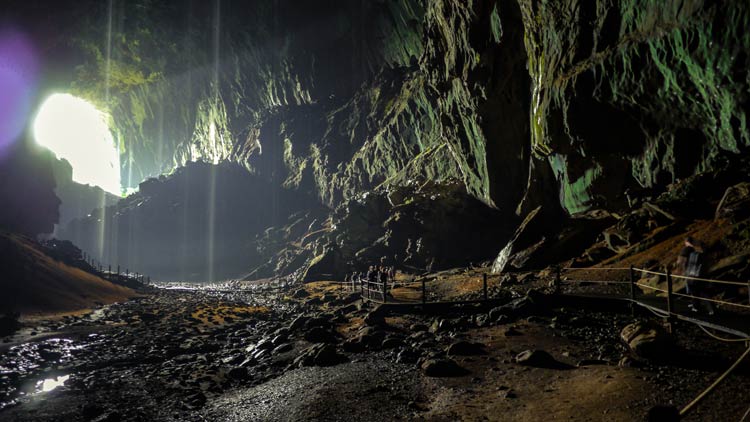
Interesting facts about The Gunung Mulu National Park
- World Heritage Site
Gunung Mulu National Park was designated a UNESCO World Heritage Site in 2000, in recognition of its unique natural and cultural features. - Age of the Caves
Some of the caves in Gunung Mulu National Park are estimated to be over three million years old. - Bats
Gunung Mulu National Park is home to one of the largest known bat populations in the world, with some caves hosting over three million bats at a time. - Cave Systems
The park’s extensive cave systems are interconnected and are thought to stretch for over 300 kilometers (186 miles). - The Pinnacles
The park’s distinctive and awe-inspiring Pinnacles were formed over millions of years as water dissolved the limestone rock and created towering spires. - Unique Ecosystem
Gunung Mulu National Park is home to a unique and diverse ecosystem, including tropical rainforests, high-altitude cloud forests, and mangrove swamps, each with its unique flora and fauna. - Headhunters’ Trail
The Headhunters’ Trail is named after the indigenous headhunting tribes that once inhabited the area, who would use the trail to travel between their villages and the nearby caves.
These are just a few of the many interesting facts about Gunung Mulu National Park. Whether you’re a seasoned traveler, a nature enthusiast, or simply someone who appreciates the beauty of the great outdoors, the park is sure to captivate and inspire you with its exceptional natural and cultural features.
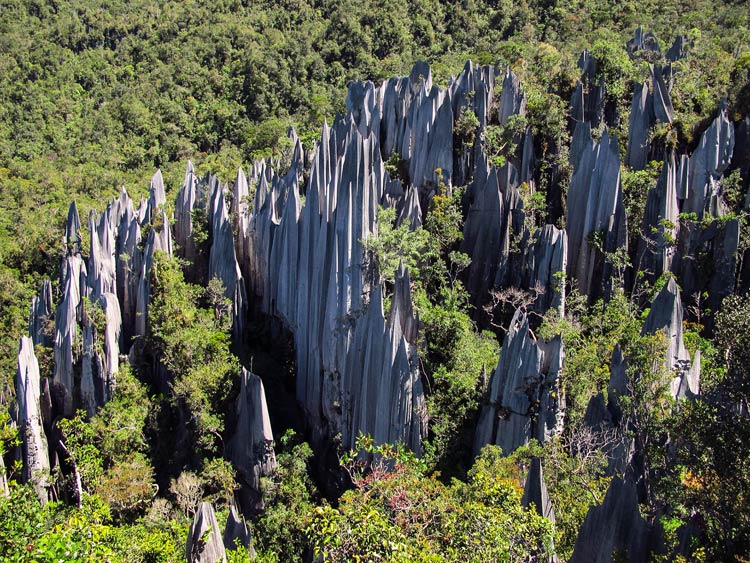
Q&A (questions and answers) about The Gunung Mulu National Park
Q: Where is Gunung Mulu National Park located?
A: Gunung Mulu National Park is located in the state of Sarawak in Malaysia, on the island of Borneo.
Q: What is the size of Gunung Mulu National Park?
A: Gunung Mulu National Park covers an area of approximately 52,864 hectares (130,000 acres).
Q: What is the highest point in Gunung Mulu National Park?
A: The highest point in Gunung Mulu National Park is the summit of Gunung Mulu, which reaches a height of 2,376 meters (7,795 feet).
Q: What is the significance of Gunung Mulu National Park?
A: Gunung Mulu National Park was designated a UNESCO World Heritage Site in 2000, in recognition of its exceptional natural and cultural features, including its extensive cave systems, diverse ecosystems, and rich cultural heritage.
Q: How many caves are there in Gunung Mulu National Park?
A: Gunung Mulu National Park is home to over 400 caves, many of which have yet to be explored.
Q: What is the Headhunters’ Trail in Gunung Mulu National Park?
A: The Headhunters’ Trail is a historic trail in Gunung Mulu National Park, named after the indigenous headhunting tribes that once inhabited the area. The trail was used by these tribes to travel between their villages and the nearby caves.
Q: What is the climate like in Gunung Mulu National Park?
A: The climate in Gunung Mulu National Park is typically warm and humid, with temperatures averaging between 20-30°C (68-86°F) throughout the year. The park receives high levels of rainfall, particularly between November and February.
Q: What kind of wildlife can be found in Gunung Mulu National Park?
A: Gunung Mulu National Park is home to a diverse range of wildlife, including over 3,500 plant species, 200 bird species, and 80 mammal species. The park is particularly known for its large bat populations and its diverse array of cave-dwelling creatures.
